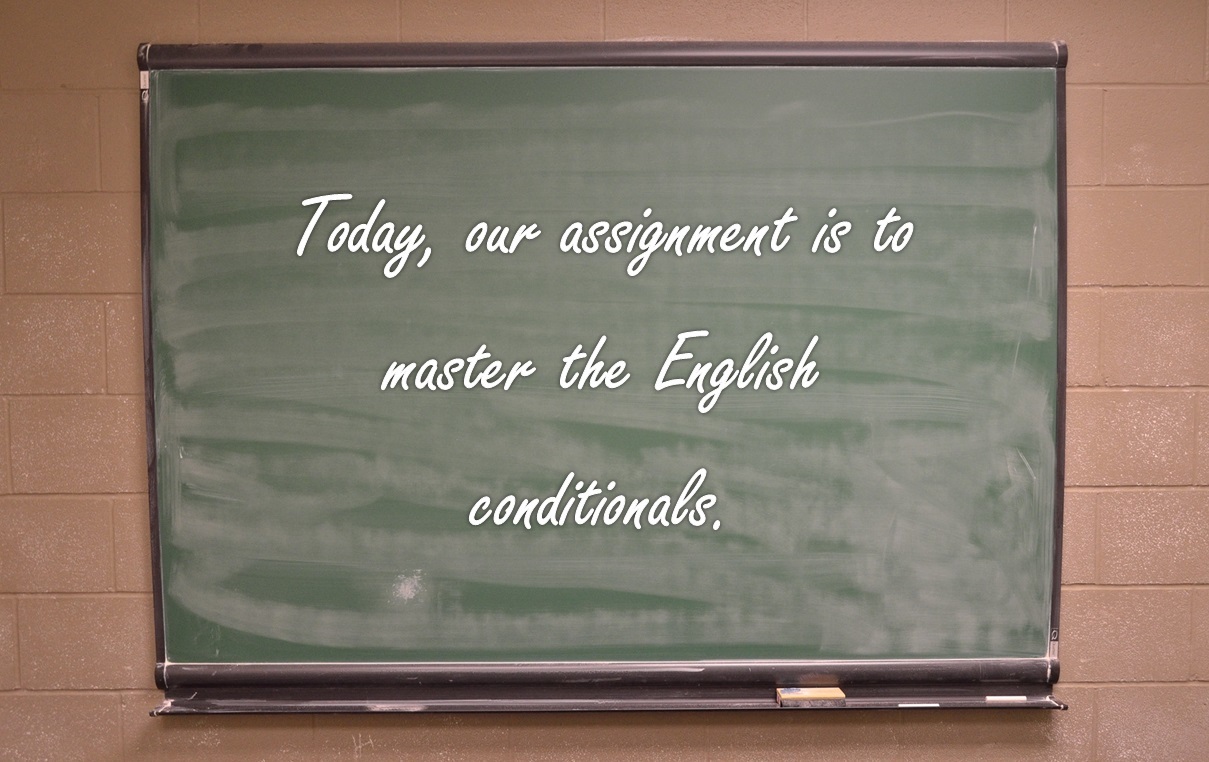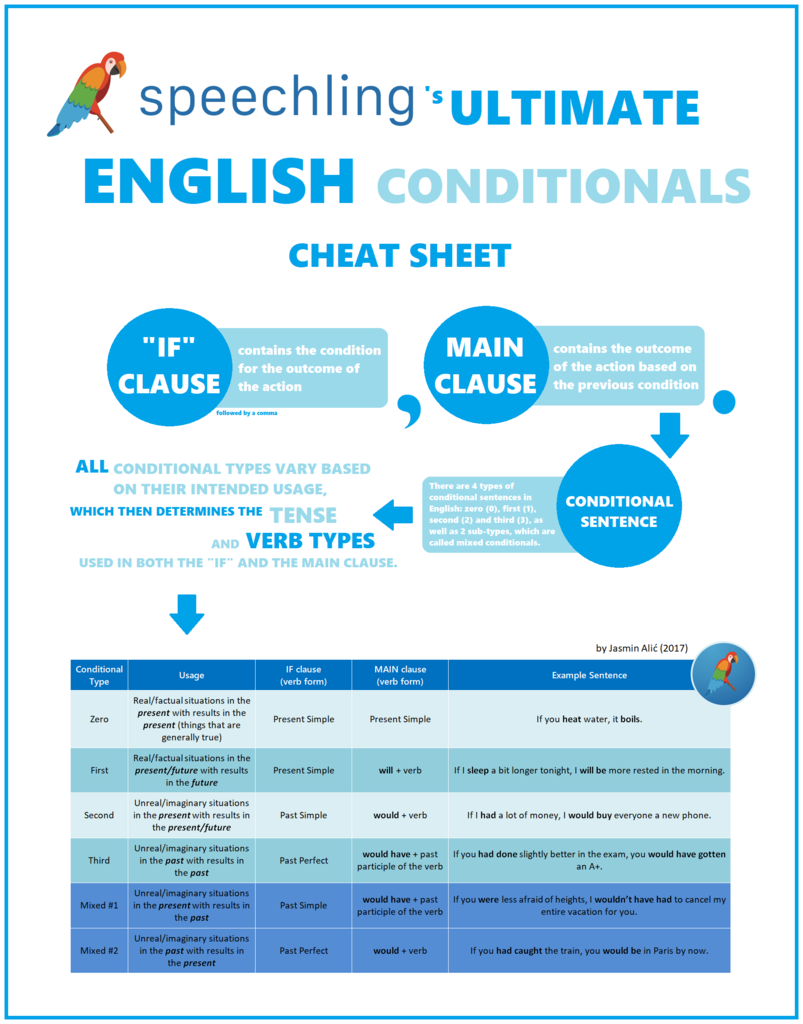Conditionals: An English Learner's Worst Nightmare

If one were to conduct a survey about the aspects of the English language that are the hardest for learners to master, I am certain that conditionals would be at the top of almost every single person’s list. I can say this from personal experience, being that students in any of the countries I’ve taught in generally have the most problems in this area.
So, what makes conditionals so hard to begin with?
By definition, conditionals or conditional sentences describe the result of something that might happen (in the present or future) or something that might have happened but didn't (in the past) based on a specific condition – hence the name.
However, depending on when the condition or the result of the main action in the sentence are set in time, whether it it’s the past, present or future, we use different types of conditional sentences.
Aaah… there we go! So, it’s about using a ton of different tenses for a ton of different situations. To make matters even worse, there are slightly more types of conditional sentences in the English language than you can count on just one hand. The total number is six, to be exact.
In sum, conditionals are the hardest to grasp because they encompass almost all English verb tenses and require learners to use any of them spontaneously at any given time and in any given context.
Yes, all of it sounds quite hard. However, this article is aimed to help you clear up some issues you might have had with conditionals and learn how and when to use them properly.

So, where do we start?
Well, what I always tell my students is in order to make conditionals as easy as possible for themselves is to understand what this language feature is at its core. In other words, a conditional can only be a conditional if it has its main ingredients, which are the condition for an action and the result of that action.
Based on the number of ingredients, we can conclude that a conditional sentence has two parts - one that includes the condition and one with the result. We call these clauses. There is the "if" clause which contains the condition and the main clause which contains the result.
Sounds easy enough so far, right? That’s because it can be; it’s only a matter of perspective.
Now, because English has different tenses where actions occur at different points in time, we can assume that the actions in the "if" and main clause can also occur at different times, e.g. if a certain condition is met today, the result will only be visible tomorrow or if a condition had been met two days ago, the result would have been visible yesterday.
This is why there are six different conditional types in English – four main ones and two sub-types, which are called mixed conditionals.
Note: The location of the clauses is interchangeable. However, if the "if" clause comes first, it must be followed by a comma before the main clause. The comma is not required if the main clause comes first.
Zero Conditional
Notice how the first conditional type is called zero - weird, right? However, everything has to start with a zero coordinate first.
Form: Present Simple ("if" clause) / Present Simple (main clause)
Usage: The zero conditional is used to talk about (scientific) facts or events that are generally true, without being affected by the time they happen in. Consider the following example.
Example: If you heat water, it boils.
First Conditional
This is probably the one English learners most commonly use, as it has the typical cause/effect notion.
Form: Present Simple ("if" clause) / "will" + verb (main clause)
Usage: The first conditional is used to talk about possible actions (conditions) in the present or future with future results.
Example: If I sleep a bit longer tonight, I will be more rested in the morning.
Second Conditional
This is where things get a bit unrealistic and part of the imaginary world.
Form: Past Simple ("if" clause) / "would" + verb (main clause)
Usage: The second conditional is used to talk about unrealistic, imaginary or hypothetical events in the present (or any time, for that matter) and their probable results.
Example: If I had a lot of money, I would buy everyone a new phone.
Third Conditional
This is probably the most complicated one for most learners. However, it is literally a copy/paste version of the second conditional set in the past.
Form: Past Perfect ("if" clause) / "would have" + past participle of the verb (main clause)
Usage: The third conditional is used to talk about unreal, imaginary or hypothetical events in the past and their probable results in the past, as well.
Example: If you had done slightly better in the exam, you would have gotten an A+.
Mixed Conditionals
This is where things get extremely interesting (not complicated). Mixed conditionals are essentially created of two opposite halves of the second and third conditional. In essence, you can take the first half of the second conditional and combine it with the second half of the third conditional or you can take the second half of the second conditional and combine it with the first half of the third conditional.
This is how the mixed effect of having both the present and the past in the same sentence is achieved.
Mixed Conditional Type #1:
Form: Past Simple ("if" clause) / "would have" + past participle of the verb (main clause)
Usage: The first mixed conditional type is used to talk about unrealistic, imaginary or hypothetical events in the present (or any time, for that matter) and their results in the past.
Example: If you were less afraid of heights, I wouldn’t have had to cancel my entire vacation for you.
Mixed Conditional Type #2:
Form: Past Perfect ("if" clause) / "would" + verb (main clause)
Usage: The second mixed conditional type is used to talk about unrealistic, imaginary or hypothetical events in the past and their probable results in the present.
Example: If you had caught the train, you would be in Paris by now.
In sum, mixed conditionals have actions that are set at two completely different points in time. To create a mixed conditional sentence, you just need to chop the second and third conditional in half and mix them together; and vice versa.
That being said, knowing this one little neat trick is what rounds up the experience around conditionals as a whole today.
Now for the cherry on top…
Since I am well aware that this is quite a lot to take in all at once, I went ahead and created a cheat sheet for mastering English conditionals for all of you to take advantage of.
It’s safe to say that this is most probably the only piece of paper you will ever need when it comes to English conditionals, as it truly contains everything you need to know to master them!

Hooray!
There may be six different conditionals in English but there is only one way to master them and have exactly zero error when using them in speech or writing, which is to study them perfectly.
I hope this article has provided you with everything you need to ease your studying process and relieve you of any unnecessary burdens when it comes to English conditionals. For your own sake, download the cheat sheet, as well, and use it wisely.
Until next time… happy learning, everyone!
